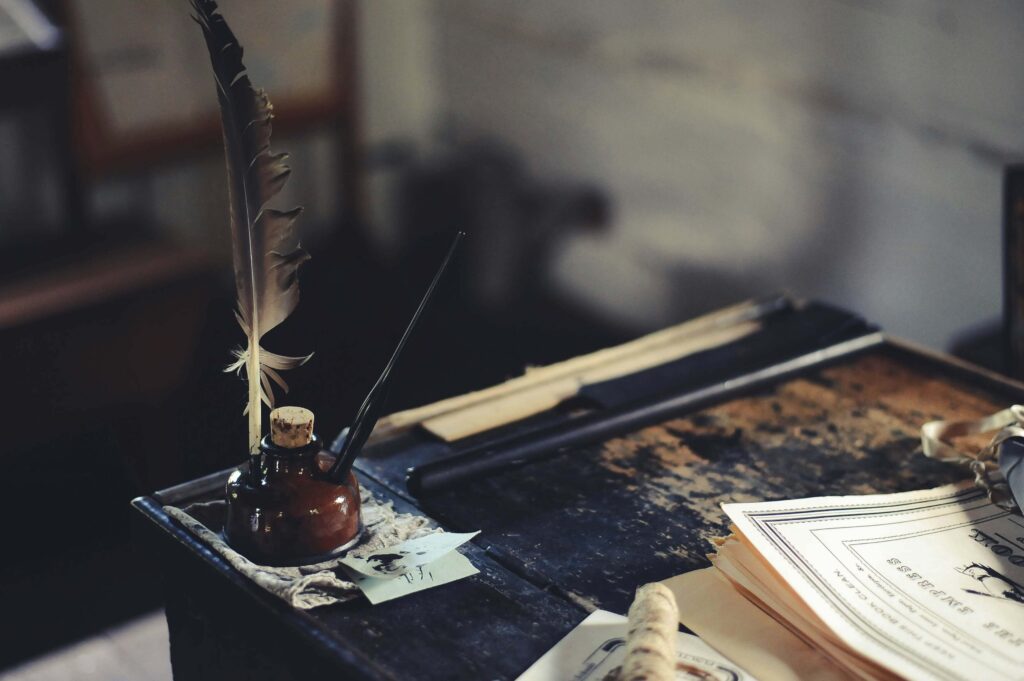
The scritch-scratch of pencil across paper is a rare sound these days. It has been replaced with the familiar clicking of keys as fingers furiously pound out letters onto a screen. Although typing certainly has its place, handwriting is becoming a lost art, present in only a few circumstances – signing your name, filling out a form. What has become of the carefully penned letters, full of detail and life, posted to far away friends? Instead, we fire off short, unmemorable text messages filled with acronyms.
Some might argue that handwriting is outdated and far too slow. Most people can type faster than they write, after all. However, handwriting done well is beautiful, and if we are to cultivate the good, true, and the beautiful in our homes, should we not also do so with handwriting?
Staring blankly at a Word document on my computer screen generally does not inspire creativity. I feel much freer when I open a page in a notebook and scribble out something by hand. It is unsurprising, then, that writing by hand is considered to enhance creativity. Studies have found that more neural pathways are stimulated when writing or drawing by hand than when typing. The fine motor movement of writing also may improve reading, one study found.
The meditative process of writing something out on paper allows thoughts to be more coherent. By slowing down and writing something out, rather than typing it hurriedly, you are forced to grasp the main ideas instead of writing down anything that comes to mind or copying notes verbatim. Children wrote far more when writing by hand, one study found. Writing by hand also improves recognition of the words, enhancing memory.
Evidently, writing by hand has many benefits. However, sometimes finding ways to write beautifully by hand is difficult, besides doing copywork. To help in this, I have gathered several interesting and creative ways to incorporate handwriting into your routine. Handwriting narrations, journaling, writing letters to friends, and practising calligraphy are just a few ways to start.
I distinctly remember the first journal I had for our trip to England. It was a light brown moleskin one, its cover water-stained from where hand sanitizer had spilled upon it. I regret not having kept it throughout all our travels. It is interesting to read it now from a different perspective. Journals are a wonderful place to practise beautiful handwriting, and you can purchase ones that have lovely cover designs quite inexpensively.
For a long time, I had several regular pen pals in England, New York, and Washington. With excitement I would wait for the letters tucked in the mailbox, gleefully ripping open the envelopes and reading the new escapades my friends had been up to. If you know families who live in different states or countries, ask if their children would be interested in writing to yours, or even begin an epistolary exchange with them. It can become a whole family effort, with everyone adding a little something to just one letter. If grandparents live in a different state, or even just a different house, children can also write letters to them.
One of my favourite parts of receiving mail are the stamps and envelopes that come along with them, just as much as the letter inside. Calligraphy, cursive, and even quick sketches on the back of an envelope or on the margins of a letter are a nice addition. Handmade birthday or greeting cards can also feature a bit of cursive on them. I create many ‘thank you’ or birthday cards with a simple watercolour floral and calligraphy. We also used to create magazines and newspapers by hand, carefully drawing illustrations and writing cursive headings neatly onto a sheet of printer paper. This way of practising handwriting feels more like art and less like copywork.
In a superficial digital age that craves immediate results, let us cultivate the leisurly, beautiful, and absorbing art of handwriting. Barry Schwartz once said, “We are surrounded by modern time-saving devices, yet we never seem to have enough time.” Let us then make time. Slow down, pick up a pen, and begin.
Sources:
https://www.forbes.com/sites/nancyolson/2016/05/15/three-ways-that-writing-with-a-pen-positively-affects-your-brain/?sh=25caf6745705
https://www.sciencedirect.com/science/article/abs/pii/S2211949312000038
https://www.ncbi.nlm.nih.gov/pmc/articles/PMC5422512/
https://www.washington.edu/news/2009/09/16/the-pen-may-be-mightier-than-the-keyboard/
https://www.scientificamerican.com/article/why-writing-by-hand-is-better-for-memory-and-learning/